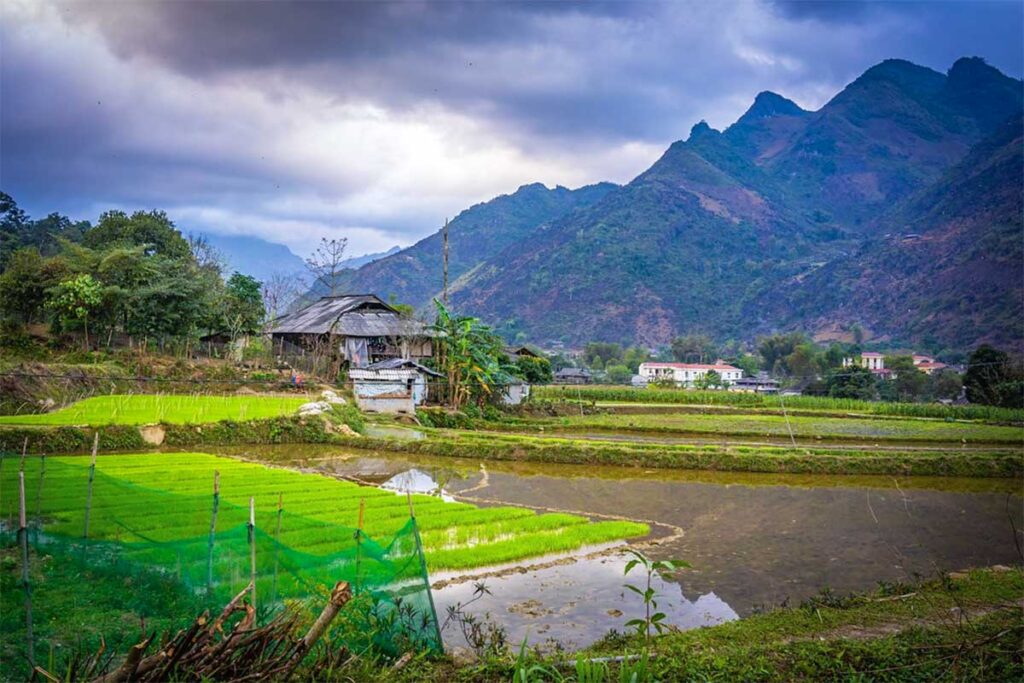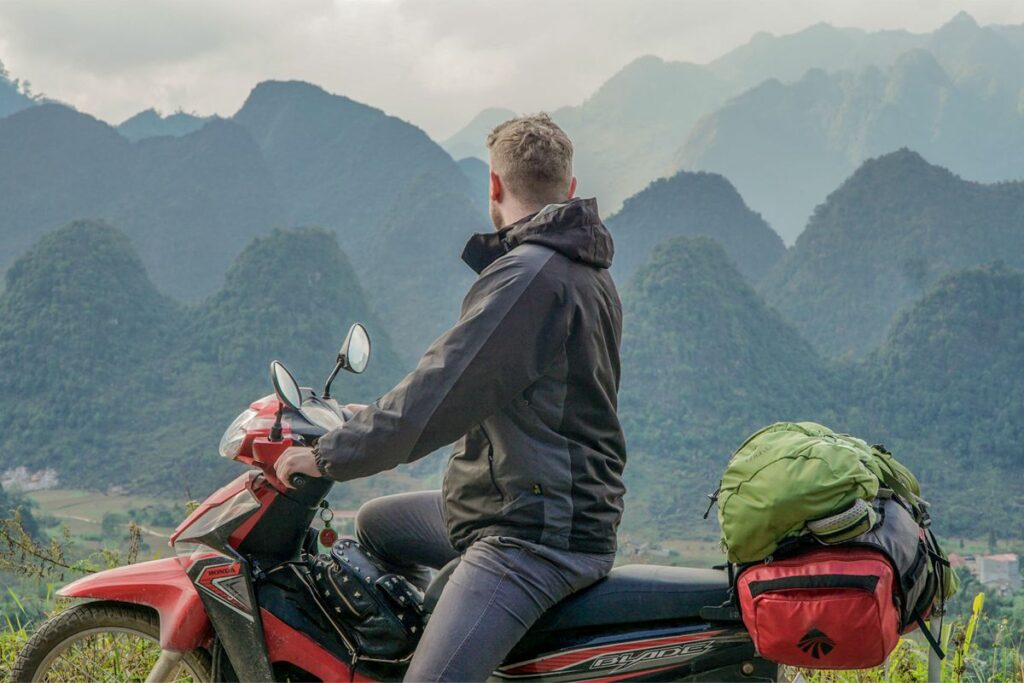What & where is Yen Minh?
Yen Minh is a large district in Ha Giang province, situated between Quan Ba and Dong Van along the well-known Ha Giang Loop. The region is characterized by pine-covered hills, limestone mountains, and quiet valleys, with elevations high enough to give it a cool, fresh highland atmosphere.
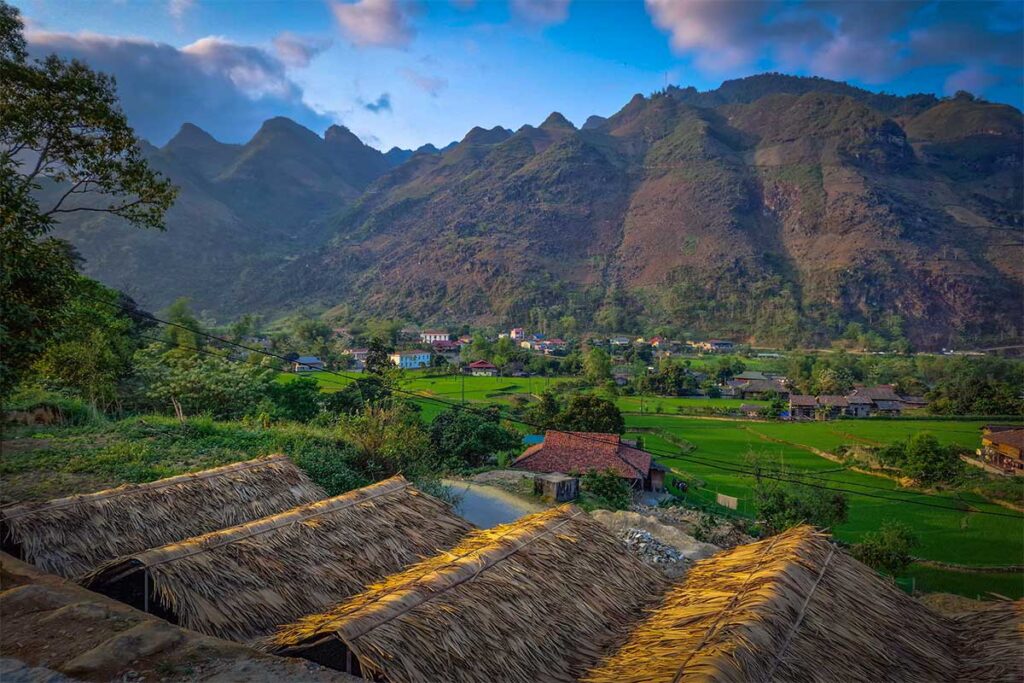
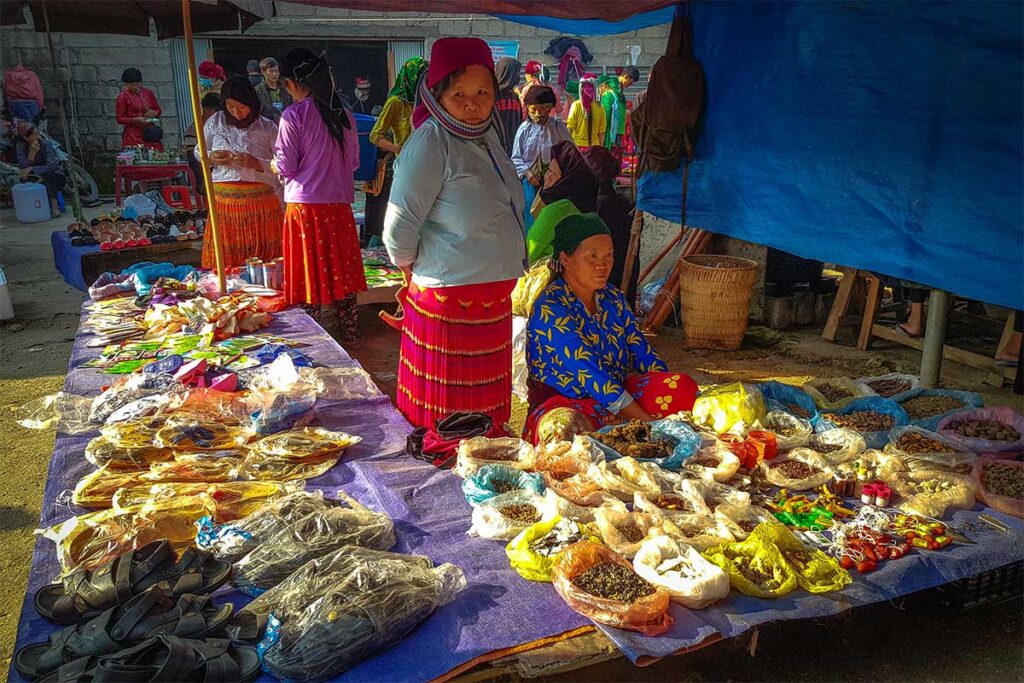
As part of the loop, most travelers pass through the western section of Yen Minh on their way to or from Dong Van. However, the district stretches far to the east, where you’ll find entirely different landscapes and ethnic communities. The western area is mostly home to Hmong and Dao communities, while other ethnic groups live in the eastern part, including around the village of Du Gia.
Yen Minh serves as both a scenic transit route and a cultural stopover, offering more than just a break between destinations.
Best things to do in Yen Minh
Du Gia Commune & Waterfall
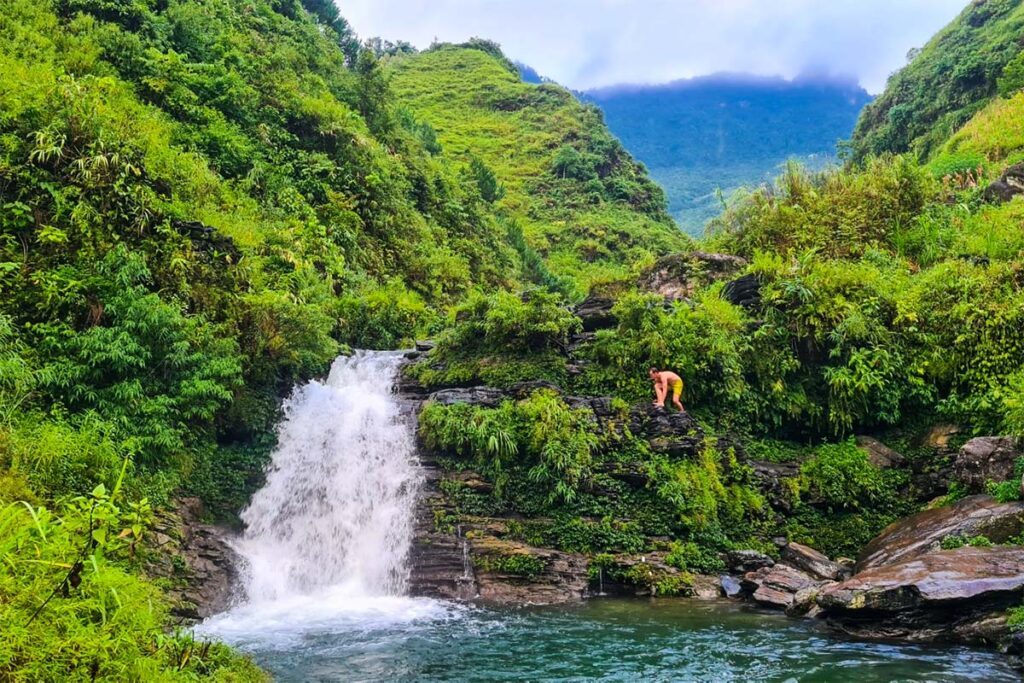
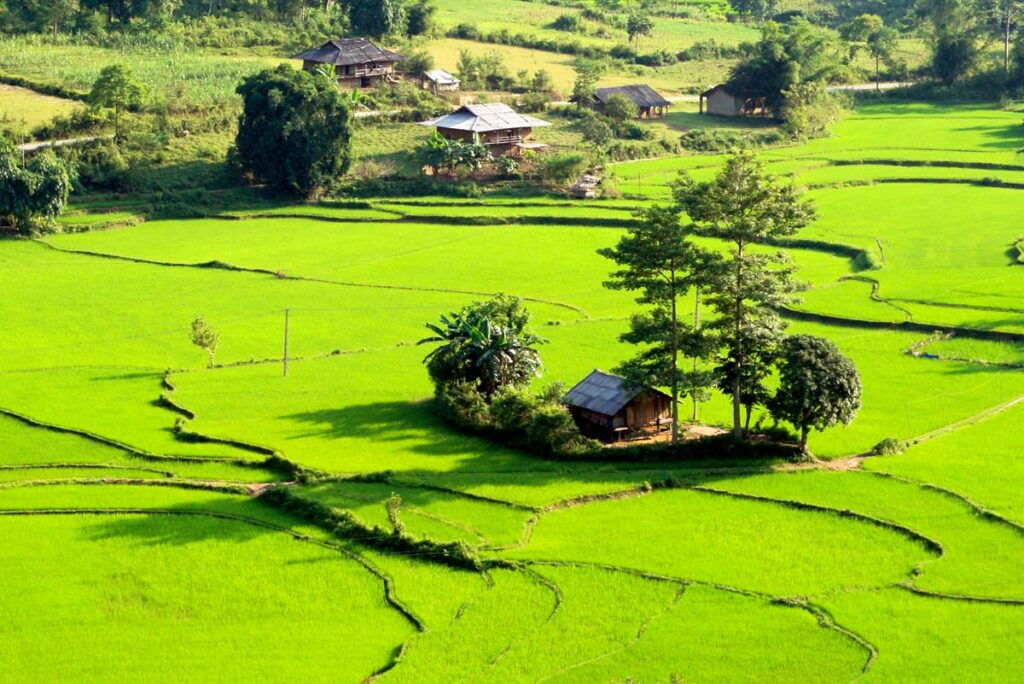
Du Gia is a peaceful commune in the southeastern part of Yen Minh District, best known for its green rice fields, slow-paced local life, and scenic waterfalls. It’s home to the Tay minority, who live in traditional stilt houses. Many travelers stay here for a night to enjoy the calm atmosphere, swim at the nearby waterfall, and join communal dinners at local homestays.
The road to Du Gia is narrow and bumpy, especially from Mau Due or Meo Vac, so it’s better suited for confident motorbike riders or travelers with an experienced Easy Rider. If you plan a 4-day Ha Giang Loop, Du Gia fits well on the last night before heading back to Ha Giang City.
Mau Due rice terraces

Mau Due, located on the southern edge of Yen Minh District, is one of the few places along the Ha Giang Loop where you’ll see classic terraced rice fields. The best views appear between late July and early September—lush green in midsummer and golden during the short harvest season.
The fields are easy to spot from the main road, so you don’t need a guide or hike. It’s worth a photo stop even if you’re passing through quickly. Mau Due also has a few guesthouses if you prefer a quiet overnight stay in nature.
Yen Minh Pine Forest
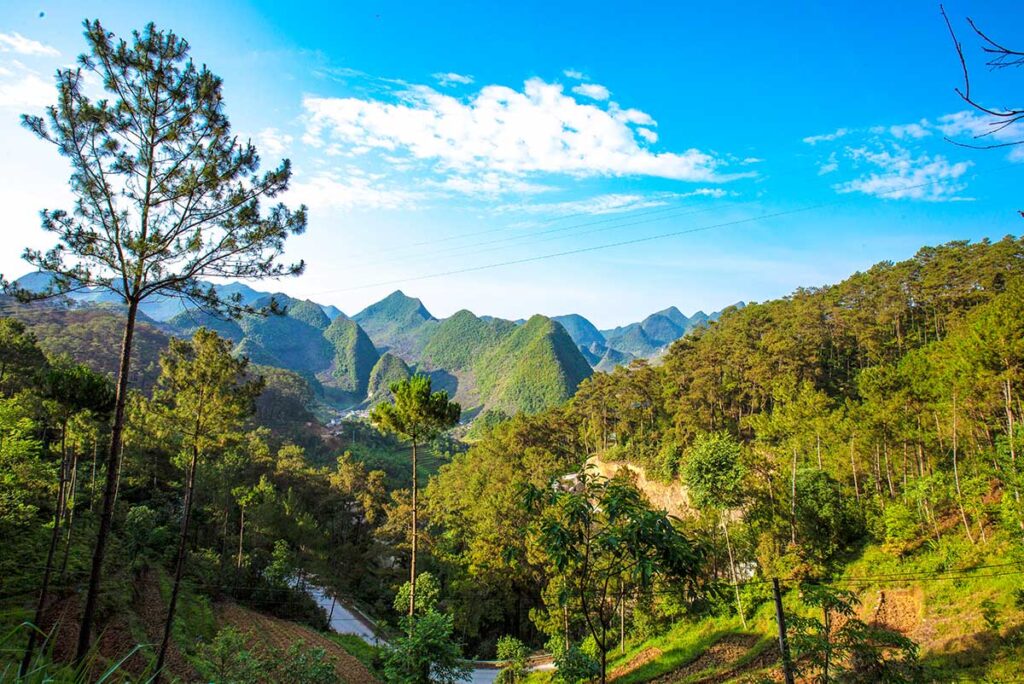
The pine forest between Quan Ba and Yen Minh offers a refreshing change of scenery from the limestone mountains and rugged valleys. Sometimes called the “Da Lat of the North” by locals, the forest stretches along the longer route (QL4C) and is best enjoyed slowly—whether you’re riding a motorbike or stopping for a short walk.
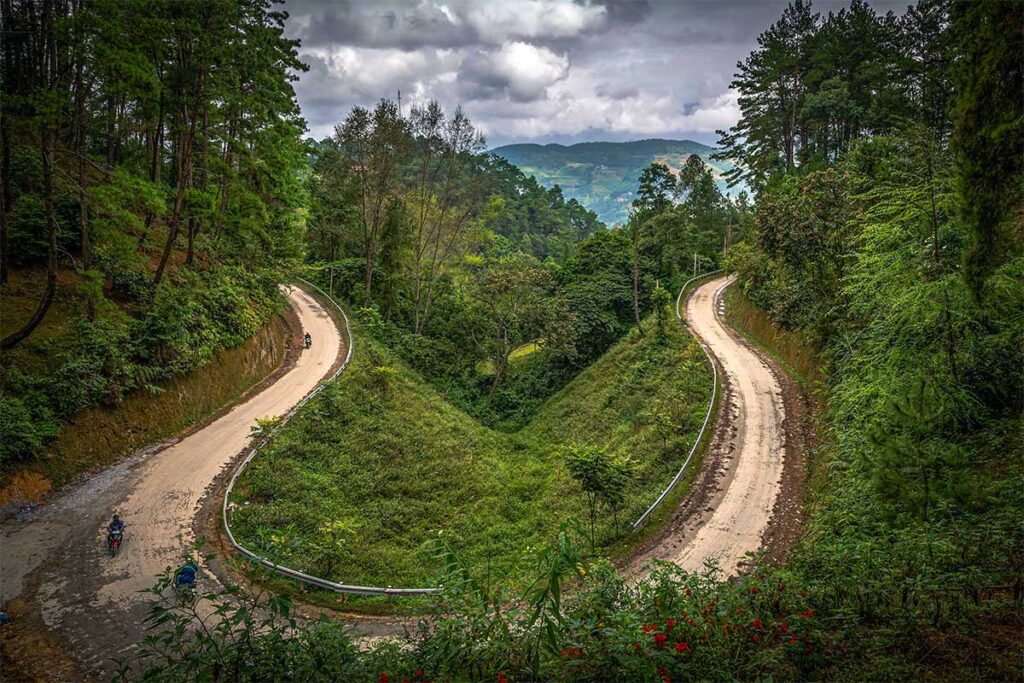
There are no marked trails, but you can explore the area freely. Early morning or late afternoon are the best times for soft light and fewer vehicles. It’s not an official attraction, but it’s a scenic and quiet stretch for photography or a coffee break at one of the small roadside cafés.
Lung Ho Viewpoint
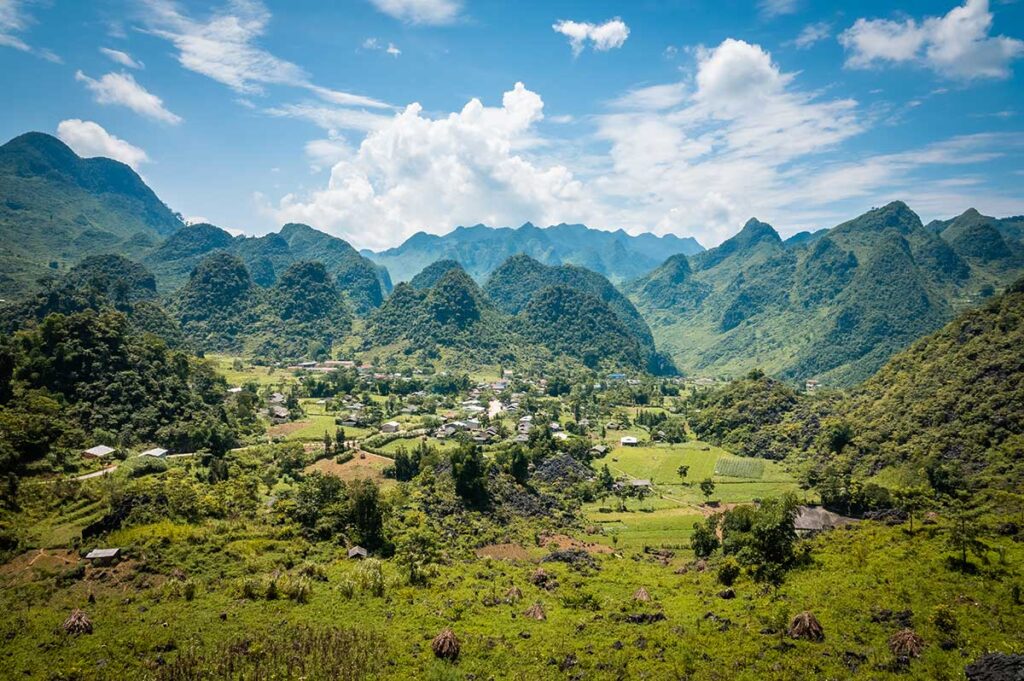
Perched above the road between Du Gia and Mau Due, the Lung Ho Viewpoint gives sweeping views of the valley below. This spot is ideal for a rest stop and quick photos, especially when the sky is clear. There’s usually a small café or snack stall at the viewpoint, making it a natural break if you’re coming from the east.
No hiking is needed here, and you can see the views directly from the roadside. It’s one of the easiest and most rewarding viewpoints in the area.
Tham Lin Cave & Bamboo rafting
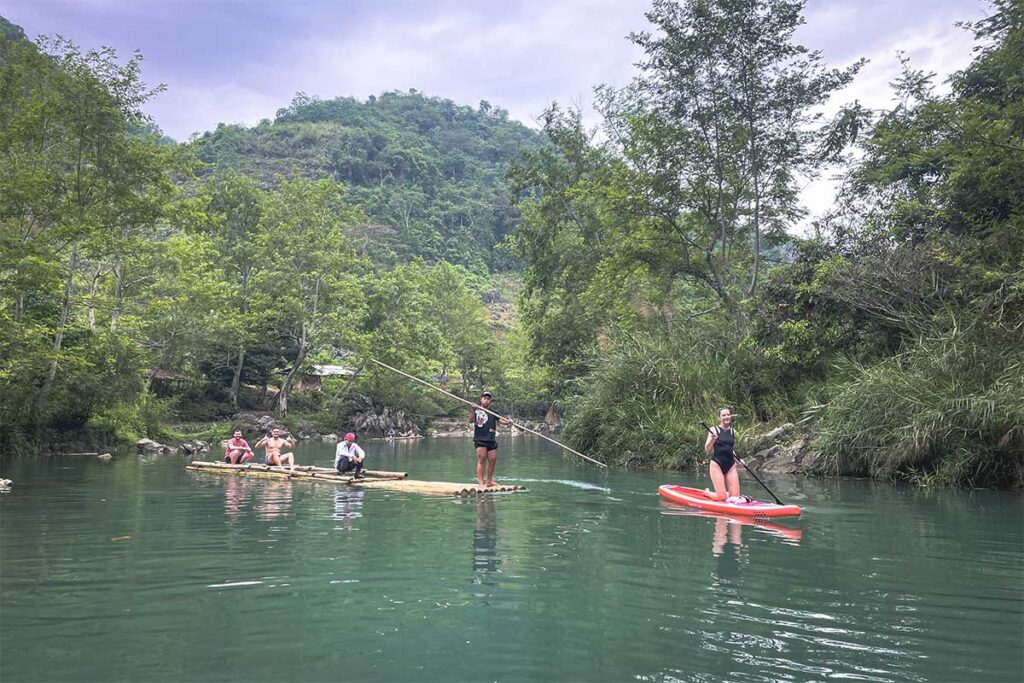
Tham Lin Cave is one of the lesser-known attractions in Yen Minh and offers a short bamboo rafting experience through a flooded cave chamber. The cave entrance is located near Na Khe commune, and although the road there is quite rough, it’s a fun stop for adventurous travelers.
The experience is simple but unique: a local guide will paddle you through the cave on a traditional bamboo raft. It’s a quiet, peaceful ride with a few dimly lit sections. You don’t need special gear, but wear shoes you don’t mind getting wet. Combine this with nearby villages or markets if you’re heading toward Dong Van.
French watchpost ruins
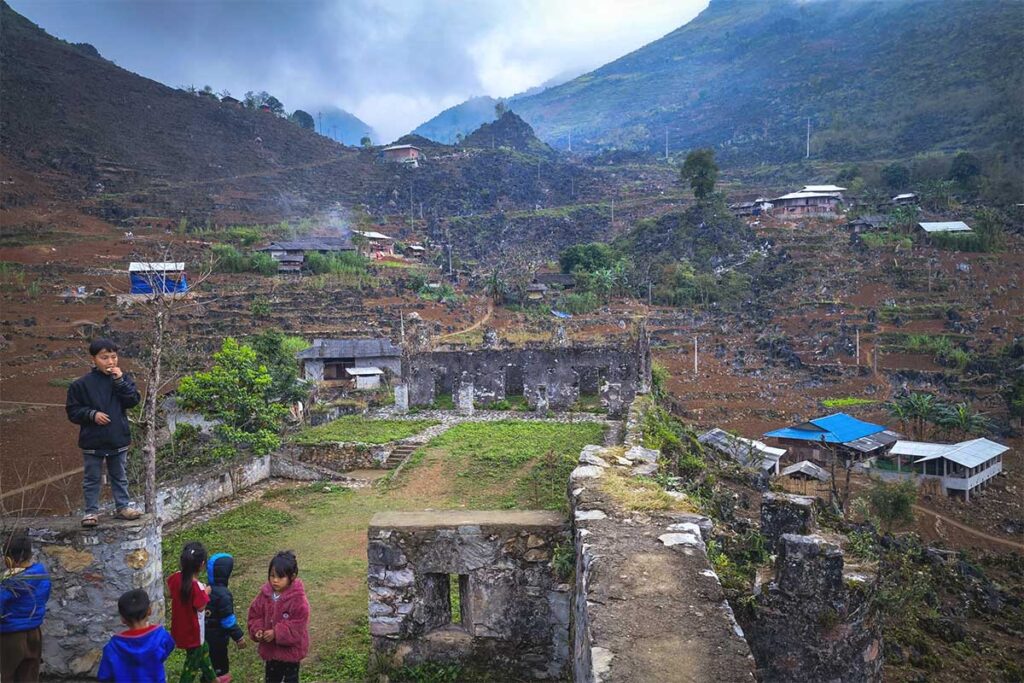
Not far from the pine forest, you’ll pass the remains of an old French watchpost—just a few walls and foundations still standing. There’s not much historical information on-site, but the area offers fantastic panoramic views. It’s more of a quick roadside stop than a full destination.
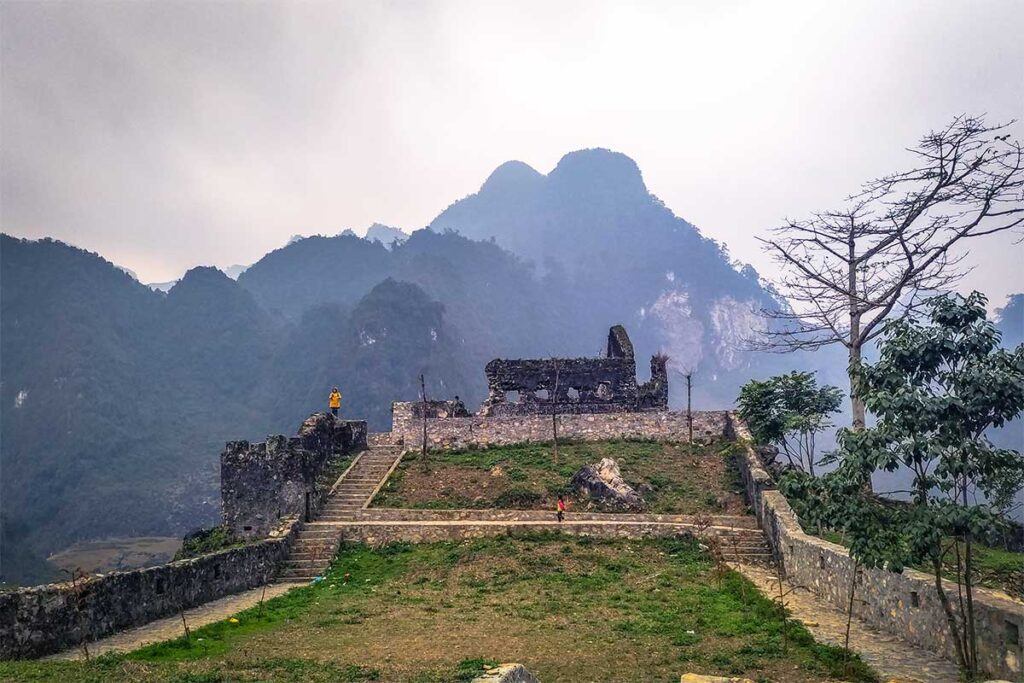
You can pull over to take photos and enjoy the scenery, especially around golden hour. There are no signs, so use Google Maps or Maps.me if you want to find the exact spot.
Local markets in Yen Minh & Du Gia
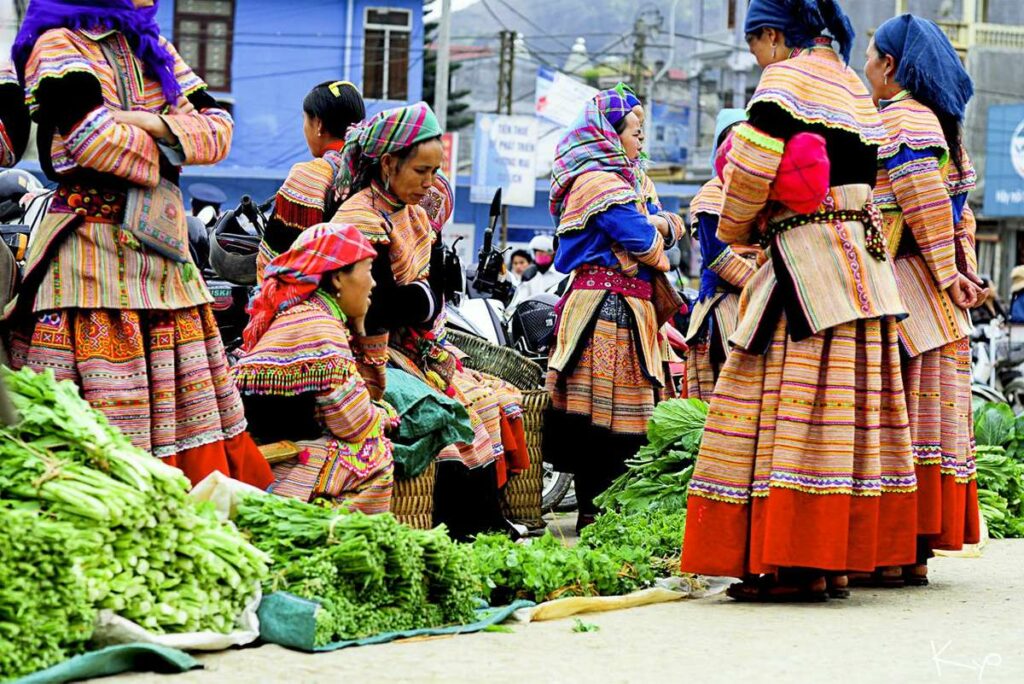
Yen Minh Town hosts a Sunday market that attracts many Hmong, Dao, and other ethnic groups from the surrounding highlands. It’s active from early morning until around noon. Expect to see colorful traditional clothes, livestock, vegetables, and strong local corn wine.
If your timing is right, Du Gia also has a small market, but it’s less frequent and more focused on daily essentials. Markets are great places to try local food, take photos, and experience the area’s real cultural vibe—just be respectful with your camera.
Where to stay in Yen Minh
Yen Minh District stretches across a wide area, so where you stay depends largely on your Ha Giang Loop itinerary. Most travelers choose between Yen Minh Town in the north and Du Gia Village in the southeast. Both offer very different experiences—and if you’re doing a 4-day loop, you could even stay in both.
Yen Minh Town – Convenient overnight stop
Located along the main loop route between Quan Ba and Dong Van, Yen Minh Town is a common overnight stop, especially on the first day of a 3- or 4-day Ha Giang Loop.
- Pros: Easy to reach, good stop if you’re short on time, a few restaurants and minimarts, simple hotels with private rooms
- Cons: Very local town with little character, not much to see or do nearby
- Comfort level: Moderate – expect basic but private accommodations (bed, fan/AC, hot water)
- Best for: First night of a loop; anyone who prefers private rooms over shared dorms
Du Gia Village – Authentic local experience
Set in a peaceful valley surrounded by rice fields, Du Gia offers a more immersive local experience. It’s a favorite among backpackers and those doing a 4-day loop, often as the final night before returning to Ha Giang City.
- Pros: Beautiful nature, shared meals with local families, scenic waterfall nearby, relaxed vibe
- Cons: Harder to reach (steep roads), less privacy, basic amenities (some places have dorms only)
- Comfort level: Low to moderate – traditional homestays with cold showers and shared spaces, but warm hospitality
- Best for: Travelers seeking culture and nature, or a social homestay experience
Remote homestays – Off-the-path adventures
Scattered throughout the district, especially in areas like Lung Ho, Na Khe, or along small backroads, you’ll find a few ethnic minority homestays. These are extremely local and not designed for tourists.
- Pros: Total immersion, no crowds, untouched scenery
- Cons: Very basic, little to no English spoken, hard to find without a local connection
- Comfort level: Low – often just a mattress on the floor and limited facilities
- Best for: Adventurous travelers with a guide or local contacts
Travel Tip:
If you’re doing a 3-day loop, you’ll likely choose Yen Minh or Du Gia, not both. For 4 days or longer, a great option is to stay in Yen Minh on the first night, Dong Van or Meo Vac on the second, and Du Gia on the third, making the most of the district’s diversity.
Best time to visit Yen Minh
The best time to visit Yen Minh depends on what you want to see—rice fields, mountain mist, or comfortable weather. Each season has its pros and cons:
- Spring (March–May): Cool and green, great for hiking and exploring villages. Occasional light rain.
- Summer (June–August): Hot and humid, but waterfalls are strong and rice fields are lush green. Afternoon showers common.
- Autumn (September–November): Ideal time. Clear skies, golden rice harvest, best for photos and outdoor activities.
- Winter (December–February): Cold, especially in highland areas. Pine forests are misty and scenic, but homestays can be uncomfortably chilly at night without heating.
Travel Tip:
For rice terraces, visit in late August to early September. For cooler weather and fewer crowds, try late autumn or early spring.
Travel tips for visiting Yen Minh
How to explore
You can visit Yen Minh by self-driving a motorbike, hiring an Easy Rider (sit on the back), or traveling by car with a driver. Motorbikes offer the most freedom, but a car is safer in bad weather or for families.
Explore tours in Yen Minh
Discover guided tours in Yen Minh with local insights, scenic routes, and easy transfers. From pine forests to Du Gia’s waterfalls—see what’s possible when you join a tour in Ha Giang’s most varied district.
Fitting Yen Minh into your loop
Yen Minh is usually a first-night stop on the loop between Quan Ba and Dong Van. On a 4-day loop, you can also include Du Gia as your final night—both are in Yen Minh District but far apart.
Essential prep
Bring offline maps (signal is unreliable), plenty of cash (no ATMs outside the town), and refuel in Yen Minh Town. Stock up on water and snacks in town as villages may not have shops.
